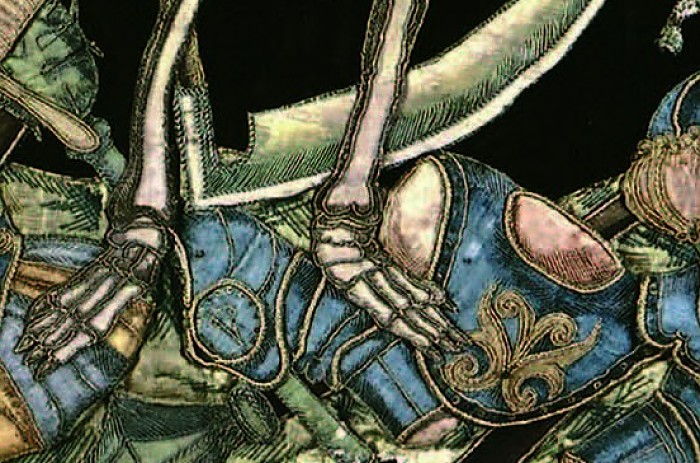

25. February 2009 – 30. April 2009
Cabinet Exhibition
Death on velvet and silk
As part of the academic series Kasseler Studien zur Sepulkralkultur, volume 14 "Der Tod auf Samt und Seide – Todesdarstellungen auf liturgischen Textilien des 16. bis 19. Jahrhunderts" by Imke Lüders from Kiel is published.
Most of the textiles exhibited which show depictions of death are chasubles. The chasuble is the priest's liturgical garment for the mass. Beginning in Baroque period until the end of the 19th century, it was worn in a so-called bass violin-form (which was reduced in material), since the originally bell-shaped vestment with its elaborate embroidery was quite heavy and was hindering the priest’s work. These mostly black robes were worn at the funeral service.
The displayed pieces show the essential techniques of textiles with depictions of death used in church services: Colorful silk applications in the 17th century, sculptural gold and silver embroidery in the 18th century and woven decorative trimmings in the 19th century.
The depictions of death are often quite drastic on older textiles, examples being the Kremsmünster chasuble and the Mainz chasuble. In the 19th century the death symbols are usually much smaller. Many times, skulls or hourglasses are combined with other motifs. These can be plant tendrils or biblical motifs from the Revelation of John and the Passion of Christ.
Arbeitsgemeinschaft Friedhof und Denkmal e.V.
Zentralinstitut für Sepulkralkultur
Museum für Sepulkralkultur
Weinbergstraße 25–27
D-34117 Kassel | Germany
Tel. +49 (0)561 918 93-0
info@sepulkralmuseum.de








